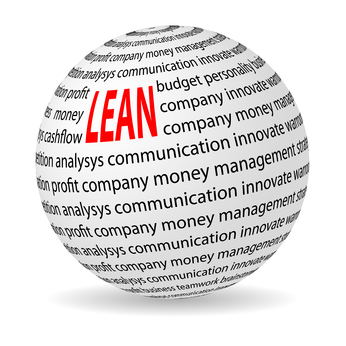Understanding lean and the 8 wastes is important for all operations people including logistics and supply chain folks.
The concept of lean (and the 8 wastes) originated in the manufacturing sector where it was first recognized that eliminating waste in the system led to much bigger profits. Henry Ford and his team at Ford Motor Company discovered lean along with the assembly line, even though they didn’t necessarily use the term lean. Dr. Taiichi Ohno and Toyota really perfected and popularized lean through their creation of the Toyota Production System (TPS). The fine folks at Lean.org provide a brief history of lean.
There are a lot of different definitions for lean, but my favorite is below.
Lean Defined:
“All we are doing is looking at the time line from the moment the customer gives us an order to the point when we collect the cash. And we are reducing that time line by removing the non-value added wastes.”
– Dr. Taiichi Ohno, Father of the Toyota Production System, 1988
Value Added Defined:
Value Added activity is any activity that shapes or transforms a product to meet customer requirements – What the customer is willing to pay for!
The 8 Wastes Defined:
Over time, lean practitioners have created the following 8 types of non-value added wastes:
- Overproduction. Producing items earlier or in greater quantities than needed by the customer. Producing earlier or more than is needed generates other wastes, such as overstaffing, storage, and transportation costs because of excess inventory. Inventory can be physical inventory or a queue of information.
- Waiting (time on hand). Workers merely serving as watch persons for an automated machine, or having to stand around waiting for the next process step, tool, supply, part, etc., or just plain having no work because of no stock, lot processing, delays, equipment downtime, and capacity bottlenecks.
- Transportation or Conveyance. Moving work in process (WIP) from place to place in a process, even if it is only a short distance. Or having to move materials, parts, or finished goods into or out of storage or between processes.
- Over processing or incorrect processing. Taking unneeded steps to process the parts. Inefficiently process due to poor tool and product design, causing unnecessary motion and producing defects. Waste is generated when providing higher quality products than is necessary. At times extra “work” is done to fill excess time rather than spend it waiting.
- Excess Inventory. Excess raw material, work in process, or finished goods causing longer lead times, obsolescence, damaged goods, transportation and storage costs, and delay. Also, extra inventory hides problems such as production imbalances, late deliveries from suppliers, defects, equipment downtime, and long setup times.
- Unnecessary Movement. Any motion employees have to perform during the course of their work other than adding value to the part, such as reaching for, looking for, or stacking parts, tools, etc. Also, walking is waste.
- Defects. Production of defective parts or correction. Repairing of rework, scrap, replacement production, and inspection means wasteful handling, time and effort.
- Unused employee creativity. Losing time, skills, improvements, and learning opportunities by not engaging or listening to your employees.
Bottom line: Implementing lean thinking and eliminating the 8 wastes can dramatically reduce costs and improve profits for manufacturers, distributors and wholesalers. Find and eliminate the 8 wastes in your organization. Start with small steps and focus on continuous improvement.
Questions: Has your company implemented lean? Is understanding lean important at your company?

